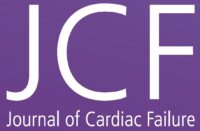This post was originally published on this site
Statistically Significant and Clinically Meaningful Increase
in Primary Efficacy Endpoint at 24 Weeks of Treatment;
Improvement Consistent Across All Prespecified Subgroups
Statistically Significant and Clinically Meaningful Improvements in All Secondary Endpoints
No Instances of Treatment Interruptions Due to Low LVEF
Company to Host Conference Call and Webcast Today at 8:30 a.m. Eastern Time
SOUTH SAN FRANCISCO, Calif., Dec. 27, 2023 (GLOBE NEWSWIRE) — Cytokinetics, Incorporated (Nasdaq: CYTK) today announced positive topline results from SEQUOIA-HCM (Safety, Efficacy, and Quantitative Understanding of Obstruction Impact of Aficamten in HCM), the pivotal Phase 3 clinical trial of aficamten in patients with symptomatic obstructive hypertrophic cardiomyopathy (HCM).
The results of SEQUOIA-HCM show that treatment with aficamten significantly improved exercise capacity compared to placebo, increasing peak oxygen uptake (pVO2) measured by cardiopulmonary exercise testing (CPET) by a least square mean difference (95% CI) of 1.74 (1.04 – 2.44) mL/kg/min (p=0.000002). The treatment effect with aficamten was consistent across all prespecified subgroups reflective of patient baseline characteristics and treatment strategies, including patients receiving or not receiving background beta-blocker therapy.
Statistically significant (p<0.0001) and clinically meaningful improvements were also observed in all 10 prespecified secondary endpoints, including Kansas City Cardiomyopathy Questionnaire Clinical Summary Score (KCCQ-CSS) at weeks 12 and 24, the proportion of patients with ≥1 class improvement in New York Heart Association (NYHA) functional class at weeks 12 and 24, change in provoked left ventricular outflow tract gradient (LVOT-G) and proportion <30 mmHg at weeks 12 and 24, as well as exercise workload and guideline-eligibility for septal reduction therapy.
Aficamten was well-tolerated in SEQUOIA-HCM with an adverse event profile comparable to placebo. Treatment emergent serious adverse events occurred in 8 (5.6%) and 13 (9.3%) patients on aficamten and placebo, respectively. Core echocardiographic left ventricular ejection fraction (LVEF) was observed to be <50% in 5 patients (3.5%) on aficamten compared to 1 patient (0.7%) on placebo. There were no instances of worsening heart failure or treatment interruptions due to low LVEF.
The full results from SEQUOIA-HCM will be presented at an upcoming medical conference.
“The results from SEQUOIA-HCM meet our high expectations for both efficacy and safety, demonstrating that aficamten added to standard of care therapy had a positive impact on exercise capacity as well as rapid and sustained effects on symptoms and functional class in patients with obstructive HCM while maintaining the safety and tolerability that we have previously observed,” said Fady I. Malik, M.D., Ph.D., Cytokinetics’ Executive Vice President of Research & Development. “We believe these results are consistent with those observed in REDWOOD-HCM, the Phase 2 clinical trial of aficamten, and FOREST-HCM, the ongoing open label extension clinical trial, and may reflect a profile enabling of aficamten to become the cardiac myosin inhibitor of choice among physicians and patients. We thank the patients, investigators and site personnel who participated in SEQUOIA-HCM and continue to support our ongoing clinical research and look forward to sharing the full results from this trial at a medical meeting in 2024.”
“Cardiac myosin inhibition represents an exciting new therapy option for patients with symptomatic obstructive HCM and I am pleased to see these impressive results from SEQUOIA-HCM,” said Martin Maron, M.D., Director, Hypertrophic Cardiomyopathy Center, Lahey Hospital and Medical Center, Burlington, MA; Tufts University School of Medicine, and National Principal Investigator of SEQUOIA-HCM. “A therapy like aficamten that improves exercise capacity in a clinically meaningful manner, absent low LVEF events that interrupt treatment, should be a welcome addition for HCM patients as well as the clinicians who treat them.”
Conference Call and Webcast Information
Cytokinetics will host a conference call today at 8:30 AM Eastern Time that will be simultaneously webcast and can be accessed from the Investors & Media section of Cytokinetics’ website at www.cytokinetics.com. The live audio of the conference call can also be accessed by telephone by registering in advance at the following link: Topline Results from SEQUOIA-HCM. Upon registration, participants will receive a dial-in number and a unique passcode to access the call.
About Aficamten and the Broad Phase 3 Clinical Trials Program
Aficamten is an investigational selective, small molecule cardiac myosin inhibitor discovered following an extensive chemical optimization program that was conducted with careful attention to therapeutic index and pharmacokinetic properties and as may translate into next-in-class potential in clinical development. Aficamten was designed to reduce the number of active actin-myosin cross bridges during each cardiac cycle and consequently suppress the myocardial hypercontractility that is associated with hypertrophic cardiomyopathy (HCM). In preclinical models, aficamten reduced myocardial contractility by binding directly to cardiac myosin at a distinct and selective allosteric binding site, thereby preventing myosin from entering a force producing state.
The development program for aficamten is assessing its potential as a treatment that improves exercise capacity and relieves symptoms in patients with HCM as well as its potential long-term effects on cardiac structure and function. Aficamten was evaluated in SEQUOIA-HCM (Safety, Efficacy, and Quantitative Understanding of Obstruction Impact of Aficamten in HCM), a pivotal Phase 3 clinical trial in patients with symptomatic obstructive hypertrophic cardiomyopathy (HCM). Aficamten is currently the subject of two ongoing Phase 3 clinical trials: MAPLE-HCM (Metoprolol vs Aficamten in Patients with LVOT Obstruction on Exercise Capacity in HCM), evaluating aficamten as monotherapy compared to metoprolol as monotherapy in patients with obstructive HCM, and ACACIA-HCM (Assessment Comparing Aficamten to Placebo on Cardiac Endpoints In Adults with Non-Obstructive HCM), evaluating aficamten in patients with symptomatic non-obstructive HCM. Aficamten received Breakthrough Therapy Designation for the treatment of symptomatic obstructive HCM from the U.S. Food & Drug Administration (FDA) as well as the National Medical Products Administration (NMPA) in China.
About Hypertrophic Cardiomyopathy
Hypertrophic cardiomyopathy (HCM) is a disease in which the heart muscle (myocardium) becomes abnormally thick (hypertrophied). The thickening of cardiac muscle leads to the inside of the left ventricle becoming smaller and stiffer, and thus the ventricle becomes less able to relax and fill with blood. This ultimately limits the heart’s pumping function, resulting in reduced exercise capacity and symptoms including chest pain, dizziness, shortness of breath, or fainting during physical activity. HCM is the most common monogenic inherited cardiovascular disorder, with approximately 280,000 patients diagnosed in the U.S., however, there are an estimated 400,000-800,000 additional patients who remain undiagnosed.1,2,3 Two-thirds of patients with HCM have obstructive HCM (oHCM), where the thickening of the cardiac muscle leads to left ventricular outflow tract (LVOT) obstruction, while one-third have non-obstructive HCM (nHCM), where blood flow isn’t impacted, but the heart muscle is still thickened. People with HCM are at high risk of also developing cardiovascular complications including atrial fibrillation, stroke and mitral valve disease.4 People with HCM are at risk for potentially fatal ventricular arrhythmias and it is one of the leading causes of sudden cardiac death in younger people or athletes.5 A subset of patients with HCM are at high risk of progressive disease leading to dilated cardiomyopathy and heart failure necessitating cardiac transplantation.
About Cytokinetics
Cytokinetics is a late-stage, specialty cardiovascular biopharmaceutical company focused on discovering, developing and commercializing first-in-class muscle activators and next-in-class muscle inhibitors as potential treatments for debilitating diseases in which cardiac muscle performance is compromised. As a leader in muscle biology and the mechanics of muscle performance, the company is developing small molecule drug candidates specifically engineered to impact myocardial muscle function and contractility. Aficamten is a next-in-class cardiac myosin inhibitor being evaluated in a broad development program inclusive of SEQUOIA-HCM, the pivotal Phase 3 clinical trial in obstructive hypertrophic cardiomyopathy, and the ongoing Phase 3 clinical trials MAPLE-HCM, evaluating aficamten as monotherapy compared to metoprolol as monotherapy in patients with obstructive HCM and ACACIA-HCM, evaluating aficamten in patients with non-obstructive HCM. Cytokinetics is also developing omecamtiv mecarbil, a cardiac muscle activator, in patients with heart failure. Additionally, Cytokinetics is developing CK-136, a cardiac troponin activator for the potential treatment HFrEF and other types of heart failure, such as right ventricular failure, resulting from impaired cardiac contractility, and CK-586, a cardiac myosin inhibitor with a mechanism of action distinct from aficamten for the potential treatment of HFpEF. In 2023, Cytokinetics is celebrating its 25-year history of pioneering innovation in muscle biology and related pharmacology focused to diseases of muscle dysfunction and conditions of muscle weakness.
For additional information about Cytokinetics, visit www.cytokinetics.com and follow us on X, LinkedIn, Facebook and YouTube.
Forward-Looking Statements
This press release contains forward-looking statements for purposes of the Private Securities Litigation Reform Act of 1995 (the “Act”). Cytokinetics disclaims any intent or obligation to update these forward-looking statements and claims the protection of the Act’s Safe Harbor for forward-looking statements. Examples of such statements include, but are not limited to, statements express or implied relating to the properties or potential benefits of aficamten or any of our other drug candidates and our ability to obtain regulatory approval for aficamten for the treatment of obstructive hypertrophic cardiomyopathy or any other indication from FDA or any other regulatory body in the United States or abroad. Such statements are based on management’s current expectations, but actual results may differ materially due to various risks and uncertainties, including, but not limited to the risks related to Cytokinetics’ business outlines in Cytokinetics’ filings with the Securities and Exchange Commission. Forward-looking statements are not guarantees of future performance, and Cytokinetics’ actual results of operations, financial condition and liquidity, and the development of the industry in which it operates, may differ materially from the forward-looking statements contained in this press release. Any forward-looking statements that Cytokinetics makes in this press release speak only as of the date of this press release. Cytokinetics assumes no obligation to update its forward-looking statements whether as a result of new information, future events or otherwise, after the date of this press release.
CYTOKINETICS® and the CYTOKINETICS and C-shaped logo are registered trademarks of Cytokinetics in the U.S. and certain other countries.
Contact:
Cytokinetics
Diane Weiser
Senior Vice President, Corporate Communications, Investor Relations
(415) 290-7757
References:
- CVrg: Heart Failure 2020-2029, p 44; Maron et al. 2013 DOI: 10.1016/S0140-6736(12)60397-3; Maron et al 2018 10.1056/NEJMra1710575
- Symphony Health 2016-2021 Patient Claims Data DoF;
- Maron MS, Hellawell JL, Lucove JC, Farzaneh-Far R, Olivotto I. Occurrence of Clinically Diagnosed Hypertrophic Cardiomyopathy in the United States. Am J Cardiol. 2016; 15;117(10):1651-1654.
- Gersh, B.J., Maron, B.J., Bonow, R.O., Dearani, J.A., Fifer, M.A., Link, M.S., et al. 2011 ACCF/AHA guidelines for the diagnosis and treatment of hypertrophic cardiomyopathy. A report of the American College of Cardiology Foundation/American Heart Association Task Force on practice guidelines. Journal of the American College of Cardiology and Circulation, 58, e212-260.
- Hong Y, Su WW, Li X. Risk factors of sudden cardiac death in hypertrophic cardiomyopathy. Current Opinion in Cardiology. 2022 Jan 1;37(1):15-21







